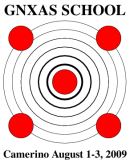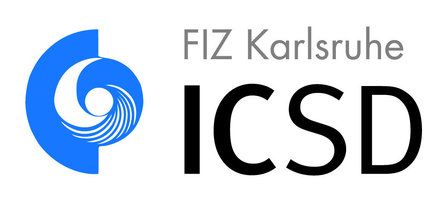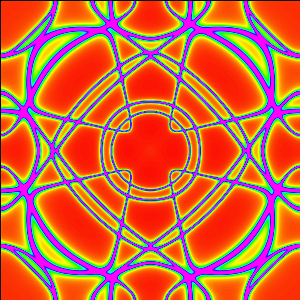Software

ARCIMBOLDO
Ab Initio macromolecular phasing has been traditionally limited to small proteins at atomic resolution (1.2Å or better unless heavy atoms are present). ARCIMBOLDO constitutes a general method for 2Å data, based on combination of location of model fragments like small ?-helices with PHASER and density modification with SHELXE, distributed over a grid of computers.
AUTOPROC
autoPROC is a set of tools and programs to automate the whole range of steps involved in data processing: analysis of collections of images and image headers, indexing of diffraction images, determination of accurate cell parameters, integration of a series of images, processing of multi-sweep datasets, production of files of intensities and amplitudes in various formats (MTZ, Scalepack), analysis of anomalous signal, automatic determination of most likely space group symmetry.
BUSTER
BUSTER is a framework for automatic refinement of macromolecules. It uses maximum-likelihood (ML) and maximum-entropy (ME) techniques to overcome two major shortcomings encountered by classical methods (least-squares (LS) + difference maps) when dealing with the refinement and completion of partial structures:
DL_POLY
DL_POLY is a general purpose classical molecular dynamics (MD) simulation software. It is a package of subroutines, programs and data files, designed to facilitate molecular dynamics simulations of macromolecules, polymers, ionic systems and solutions on a distributed memory parallel computer.
FDMNES
The aim of the FDMNES project is to supply to the community a user friendly code to simulate x-ray spectroscopies, linked to the real absorption (XANES, XMCD) or resonant scattering (RXD) of the synchrotron radiation. This ab initio approach, wants to eliminate all the methodological parameters. First mainly mono-electronic, using the functionnal density theory (DFT), it includes now multi-electronics advances with the use of the time dependant DFT (TD-DFT) for a better taking into account of the excited states linked to the photon-matter interaction. It includes also the Hubbard correction (LDA+U) for a better description of the so called correlated materials.

GNXAS
The GNXAS package is a computer code for EXAFS data analysis based on multiple-scattering (MS) calculations and a rigorous fitting procedure of the raw experimental data. The main characteristic of the software are: + atomic phase shifts calculations in the muffin-tin approximation based on atom self-consistent relativistic calculations. Account for the neighbors is taken. + Inclusion of inelastic losses through complex Hedin-Lundqvist potential. + Calculation of MS signals associated with two, three, and four atom configurations using advanced algorithms. Use of an advanced fitting procedure that allows: + to fit simultaneously any number of spectra containing any number of edges, + to use directly the raw data without any pre-analysis, + to account for complex background multi-electron excitation features, + to use various model peaks for the pair, triplet and quadruplet distribution functions, including non Gaussian models and extreme cases. In all cases absolute parameters can be fitted, - to treat liquid phase or disordered systems and extract reliable g(r) functions in the short range, - to perform a rigorous statistical error analysis and plot two-dimensional correlation maps, - to provide a flexible scientific tool for EXAFS data analysis where the user has access to every stage of the calculation. - full modularity that makes easy to interface parts of the GNXAS software with other available software.

ICSD
Inorganic Crystal Structure Database, containing about 185,000 peer-reviewed data entries of inorganic and related structures, including their atomic coordinates dating back to 1913. It is produced cooperatively by FIZ Karlsruhe and the National Institute of Standards and Technology (NIST).

MXAN
MXAN performs a quantitative analysis of the XANES energy range. This is based on a comparison between experimental data and many theoretical spectra that are calculated by varying selected structural parameters of an initial putative structure, i.e. a well defined initial geometrical configurations around the absorber. Hundreds of different geometrical configurations are needed to obtain the best fit of the experimental data. The calculations are performed in the energy space without involving any Fourier transform algorithm; polarized spectra can be easily analysed because the calculations are performed within the full multiple scattering approach. Recently, MXAN has been developed in the framework of the multiple scattering theory and successfully applied to the analysis of several system, both in solid and liquid state. The MXAN procedure,encompasses also the phenomenological broadening and the electronic charge fitting.
NAMD
NAMD is a parallel molecular dynamics code designed for high-performance simulations of large biomolecular systems.
SHARP/autoSHARP
SHARP is a computer program for macromolecular crystallography. It operates on reduced, merged and scaled data from SIR(AS), MIR(AS) and MAD experiments, refines the heavy-atom model, helps detect minor or disordered sites using likelihood-based residual maps, and calculates phase probability distributions for all reflections in the data set. autoSHARP is an automated structure solution system - from merged data to automatic model building (uses SHARP as phasing engine).

SPR-KKR
The SPRKKR band structure package allows to calculate the electronic structure of arbitrary 3-D periodic systems, including systems with chemical disorder. The treatment of 2-D periodic systems (e.g. surfaces) can be done at the moment only by using an auxiliary system having three dimensional periodicity or by making use of the cluster approximation. The electronic structure calculation can be done in a non-relativistic, scalar-relativistic as well as fully relativistic mode. In the scalar-relativistic mode paramagnetic as well as spin-polarized systems can be treated, including non-collinear spin structures and arbitrary spin spirals. In the fully relativistic mode, paramagnetic as well as spin-polarized systems with an arbitrary spin configuration can be dealt with. On the basis of the electronic structure calculation, many different properties can be investigated with a strong emphasize on response functions and spectroscopic properties.
XDS
X-ray Detector Software for processing single-crystal monochromatic diffraction data recorded by the rotation method. It processes a sequence of adjacent, nonoverlapping rotation images collected from a single-crystal at a fixed X-ray wavelength and recorded by a variety of imaging plate, CCD, pixel and multiwire area detectors; allows arbitrary but fixed orientations of the detector and rotation axis, and only requires that incident beam and rotation axis intercept in one point in the center of the crystal; automatically derives reflecting range, spot width, crystal orientation, symmetry, and cell parameters from the data images. delivers a list of corrected integrated intensities of the reflections occuring in the data images.
- ← Previous
- 1
- Next →

